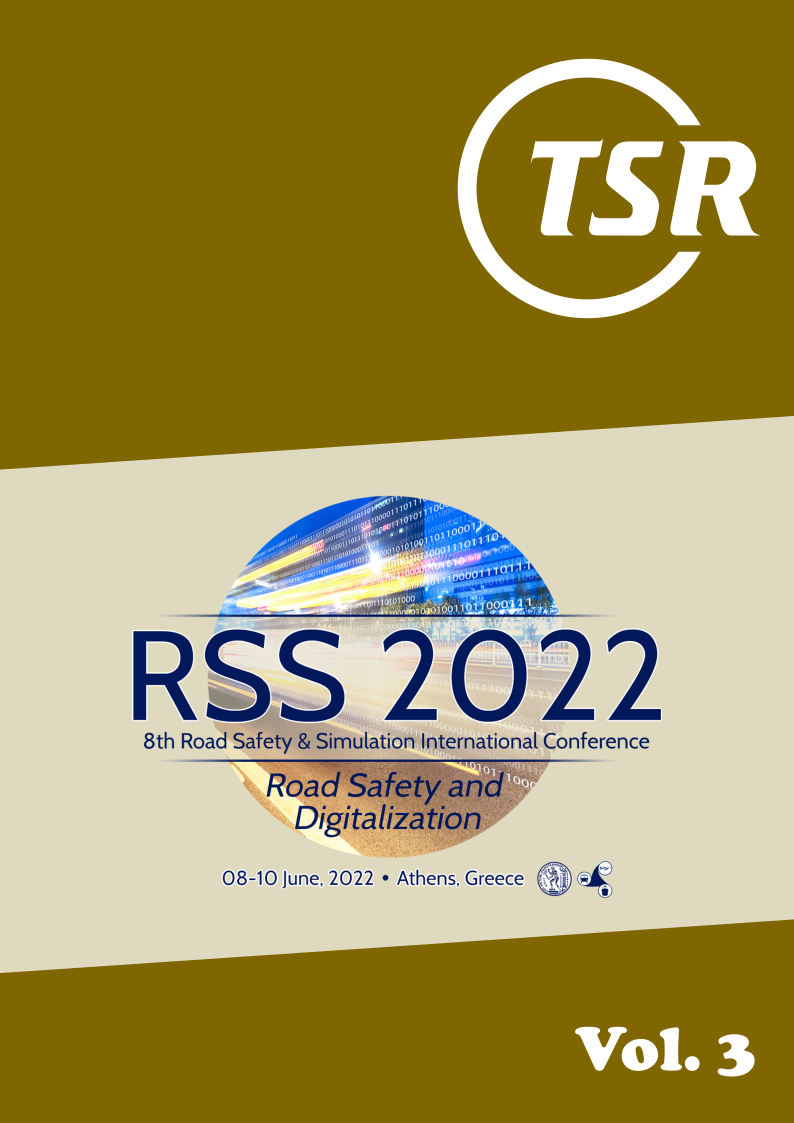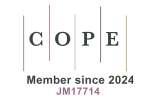The role of values in road safety culture: Examining the relationship between valuation of freedom to take risk and accident risk among motorcycle riders and car drivers
DOI:
https://doi.org/10.55329/ggnj7534Keywords:
Greece, motorcycles, Norway, road safety culture, values, Vision ZeroAbstract
Focus on paternalistic values versus individual freedom is a fundamental theme, which defines the status of road safety in different settings. The present study examines the role of values related to freedom to take risk in traffic in road safety culture based on survey data from car drivers (n = 882) and motorcycle riders (n = 330) from two countries with distinctly different road safety records: Norway, which had the lowest road mortality rate in Europe with 20 road deaths per million inhabitants in 2017, and Greece, which had 69 road deaths per million inhabitants, which was well above the EU average of 50. Contrary to our first hypothesis, we do not find a statistically significant higher valuation of freedom to take risk in traffic among Greek drivers and riders than among drivers and riders from Norway. In line with our second hypothesis, we find that motorcycle riders in both countries value freedom to take risk in traffic significantly higher than car drivers in their country. Regression analyses indicate a relationship between higher valuation of freedom to take risk in traffic and risky rider behaviours, which are related to accident involvement. Our results indicate that values focusing on freedom to take risk have an important role in road safety culture, presumably legitimizing and motivating risky driving/riding. This is in line with previous research, where riders cite freedom as the main enjoyment factor for riding. Previous studies find six times higher accident risk among riders than drivers, which is explained partly by pointing to risky rider behaviours.
Downloads
References
Adminaite, D., T. Calinescu, G. Jost, et al. (2018), ‘Ranking EU progress on road safety: 12th Road Safety Performance Index Report’ (Brussels: European Transport Safety Council), https://etsc.eu/wp-content/uploads/PIN_AR_2018_final.pdf, accessed 14 August 2022.
Ajzen, I. (1991), ‘The theory of planned behavior’, Organizational Behavior and Human Decision Processes, 50 (2), 179–211, https://doi.org/10.1016/0749-5978(91)90020-t.
Ajzen, I. (2001), ‘Nature and Operation of Attitudes’, Annual Review of Psychology, 52, 27–58, https://doi.org/10.1146/annurev.psych.52.1.27.
Antonsen, S. (2009), ‘The relationship between culture and safety on offshore supply vessels’, Safety Science, 47 (8), 1118–1128, https://doi.org/10.1016/j.ssci.2008.12.006.
Bjørnskau, T., T.-O. Nævestad, J. Akhtar (2012), ‘Traffic safety among motorcyclists in Norway: A study of subgroups and risk factors’, Accident Analysis & Prevention, 49, 50–57, https://doi.org/10.1016/j.aap.2011.09.051.
Broughton, P. S. (2005), ‘Designing PTW Training to Match Rider Goals’, in Dorn, L. (ed.) Driver behaviour and training, vol. II (Aldershot, Hants, UK: Ashgate Publishing).
Cialdini, R. B., R. R. Reno, C. A. Kallgren (1990), ‘A focus theory of normative conduct: Recycling the concept of norms to reduce littering in public places’, Journal of Personality and Social Psychology, 58 (6), 1015–1026, https://doi.org/10.1037/0022-3514.58.6.1015.
DaCoTa (2012), ‘Powered Two Wheelers’ (EC FP7 project 233659: DaCoTA—Road Safety Data, Collection, Transfer and Analysis), Deliverable 4.8n, https://www.dacota-project.eu/Deliverables/Webtexts/PWT.pdf, accessed 14 August 2022.
de Winter, J. C. F., D. Dodou (2010), ‘The Driver Behaviour Questionnaire as a predictor of accidents: A meta-analysis’, Journal of Safety Research, 41 (6), 463–470, https://doi.org/10.1016/j.jsr.2010.10.007.
Edwards, J., J. Freeman, D. Soole, B. Watson (2014), ‘A framework for conceptualising traffic safety culture’, Transportation Research Part F: Traffic Psychology and Behaviour, 26, 293–302, https://doi.org/10.1016/j.trf.2014.03.002.
Elvebakk, B. (2015), ‘Paternalism and acceptability in road safety work’, Safety Science, 79, 298–304, https://doi.org/10.1016/j.ssci.2015.06.013.
Elvebakk, B., I. S. Hesjevoll, T. E. Julsrud (2016), ‘På rett vei: Er myndighetenes trafikksikkerhetsarbeid ekspertstyring og paternalisme?’ [Heading in the right direction. Is public road safety work paternalism and expert rule?] (Oslo: Institute of Transport Economics), TØI rapport 1491/2016, https://www.toi.no/getfile.php?mmfileid=43226, accessed 14 August 2022.
Fishbein, M., I. Ajzen (1975), Belief, Attitude, Intention, and Behavior: An Introduction to Theory and Research (Reading, MA: Addison-Wesley), https://people.umass.edu/aizen/f&a1975.html, accessed 14 August 2022.
Gehlert, T., C. Hagemeister, T. Özkan (2014), ‘Traffic safety climate attitudes of road users in Germany’, Transportation Research Part F: Traffic Psychology and Behaviour, 26 (Part B), 326–336, https://doi.org/10.1016/j.trf.2013.12.011.
Haukelid, K. (2008), ‘Theories of (safety) culture revisited—An anthropological approach’, Safety Science, 46 (3), 413–426, https://doi.org/10.1016/j.ssci.2007.05.014.
Kaçan, B., G. Fındık, Y. Üzümcüoğlu, et al. (2019), ‘Driver profiles based on values and traffic safety climate and their relationships with driver behaviors’, Transportation Research Part F: Traffic Psychology and Behaviour, 64, 246–259, https://doi.org/10.1016/j.trf.2019.05.010.
Lonero, L. (2007), ‘Finding the next cultural paradigm for road safety’, in Hedlund, J. (ed.) Improving Traffic Safety Culture in the United States: The Journey Forward (Washington, DC: American Psychological Association), 1–20.
Moeckli, J., J. D. Lee (2007), ‘The making of driving cultures’, in Hedlund, J. (ed.) Improving Traffic Safety Culture in the United States: The Journey Forward (Washington, DC: American Psychological Association), 59–76.
Nævestad, T.-O., A. Laiou, R. O. Phillips, et al. (2019a), ‘Safety Culture among Private and Professional Drivers in Norway and Greece: Examining the Influence of National Road Safety Culture’, Safety, 5 (2), 20, https://doi.org/10.3390/safety5020020.
Nævestad, T.-O., R. O. Phillips, A. Laiou, et al. (2019b), ‘Safety culture among bus drivers in Norway and Greece’, Transportation Research Part F: Traffic Psychology and Behaviour, 64, 323–341, https://doi.org/10.1016/j.trf.2019.05.006.
Nævestad, T.-O., A. Laiou, G. Yannis (2020), ‘Safety Culture Among Car Drivers and Motorcycle Riders in Norway and Greece: Examining the Influence of Nationality, Region, and Transport Mode’, Frontiers in Sustainable Cities, 2, 23, https://doi.org/10.3389/frsc.2020.00023.
Nævestad, T.-O., A. Laiou, T. Rosenbloom, et al. (2022), ‘The role of values in road safety culture: Examining the valuation of freedom to take risk, risk taking and accident involvement in three countries’, Transportation Research Part F: Traffic Psychology and Behaviour, 84, 375–392, https://doi.org/10.1016/j.trf.2021.12.012.
Reason, J., A. Manstead, S. Stradling, et al. (1990), ‘Errors and violations on the roads: a real distinction?’, Ergonomics, 33 (10-11), 1315–1332, https://doi.org/10.1080/00140139008925335.
Rowden, P., B. Watson, N. Haworth, et al. (2016), ‘Motorcycle riders’ self-reported aggression when riding compared with car driving’, Transportation Research Part F: Traffic Psychology and Behaviour, 36, 92–103, https://doi.org/10.1016/j.trf.2015.11.006.
Schein, E. H. (2004), Organizational Culture and Leadership (San Francisco: Jossey-Bass) 3rd Edition.
Schwartz, S. H. (1992), ‘Universals in the Content and Structure of Values: Theoretical Advances and Empirical Tests in 20 Countries’, Advances in Experimental Social Psychology, 25, 1–65, https://doi.org/10.1016/s0065-2601(08)60281-6.
Seymer, A. (2013), ‘Values and political attitudes: A systematic and empirical review of a simple (?) association’, Dissertation, in partial fulfillment of the requirements for the degree Doctor of Philosophy, University Salzburg, Faculty of Cultural and Social Sciences, Department of Political Science and Sociology, https://www.seymer.at/pdf/PhD2013.pdf, accessed 14 August 2022.
Tunnicliff, D., B. Watson, K. M. White, et al. (2011), ‘The Social Context of Motorcycle Riding and the Key Determinants Influencing Rider Behavior: A Qualitative Investigation’, Traffic Injury Prevention, 12 (4), 363–376, https://doi.org/10.1080/15389588.2011.577653.
Warner, H. W., T. Özkan, T. Lajunen, G. Tzamalouka (2011), ‘Cross-cultural comparison of drivers’ tendency to commit different aberrant driving behaviours’, Transportation Research Part F: Traffic Psychology and Behaviour, 14 (5), 390–399, https://doi.org/10.1016/j.trf.2011.04.006.
WHO (2022), ‘Road traffic injuries’ (World Health Organisation), https://www.who.int/news-room/fact-sheets/detail/road-traffic-injuries, accessed 14 August 2022.
Özkan, T., T. Lajunen (2011), ‘Chapter 14 - Person and Environment: Traffic Culture’, in Porter, B. E. (ed.) Handbook of Traffic Psychology (Amsterdam: Elsevier), 179–192, https://doi.org/10.1016/B978-0-12-381984-0.10014-1.
Downloads
Published
How to Cite
Issue
Section
Categories
License
Copyright (c) 2022 Tor-Olav Nævestad, Alexandra Laiou, George Yannis

This work is licensed under a Creative Commons Attribution 4.0 International License.










